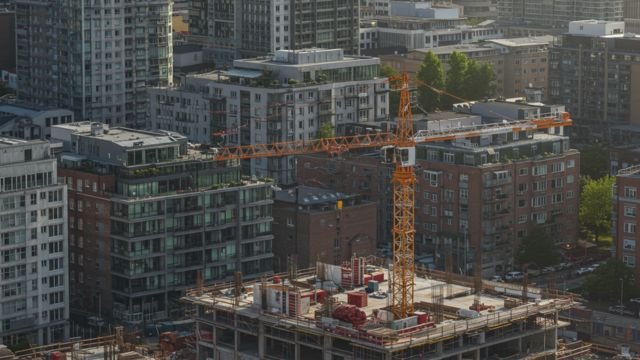When it comes to construction projects in bustling city environments, coordinating crane hire can be a challenging yet crucial task. Busy urban sites present unique hurdles—tight spaces, heavy traffic, strict regulations, and constant activity—that require careful planning and communication. Mastering the art of city crane coordination can save time, reduce costs, and keep your project running smoothly.
Understanding the Complexity of Busy City Sites
City construction sites are rarely quiet or simple. The presence of pedestrians, traffic flow, nearby businesses, and other contractors working simultaneously creates a complex web of activity. In such an environment, introducing a large, powerful machine like a crane demands a thoughtful approach.
Recognizing these complexities upfront helps set realistic expectations and guides how you manage crane logistics. It’s about more than just scheduling a crane—it’s about harmonizing the crane’s operation with everything else happening on site.
Early Planning is Key to Success
Successful crane coordination starts long before the crane arrives. Engaging with your crane hire provider during the planning phase ensures everyone understands the project’s timeline, site conditions, and specific lifting needs.
Discussing the type and size of crane early on helps avoid last-minute surprises. For instance, a compact crane might be essential if your site has limited access, or a tower crane could be necessary for vertical lifts in tight urban spaces.
Working closely with all stakeholders—including site managers, subcontractors, and city officials—during planning makes it easier to align schedules and anticipate potential roadblocks.
Securing Permits and Compliance Requirements
Operating cranes in city environments often requires special permits and compliance with local regulations. This can include traffic management plans, noise restrictions, and safety protocols.
It’s wise to assign permit responsibilities early, whether handled by your crane hire company or your project management team. Waiting until the last minute to secure permits can lead to costly delays or fines.
Partnering with crane providers familiar with the city’s rules can streamline this process. They often have experience navigating municipal requirements and can advise on what’s necessary to keep your project compliant.
Communicating Clearly With Everyone Involved
Clear, consistent communication is one of the most important best practices when coordinating crane hire on busy sites. Crane operators, site supervisors, delivery drivers, and other contractors all need to be on the same page.
Holding regular coordination meetings—either in person or virtually—helps everyone stay informed about schedules, changes, and safety considerations.
Sharing detailed site plans and crane operation timelines prevents misunderstandings. When unexpected issues arise, quick communication helps address them before they escalate into costly problems.
Planning for Site Access and Traffic Management
Accessing a city site with a crane requires careful attention to logistics. Streets may be narrow, traffic heavy, and parking limited.
Planning your crane’s arrival and departure during off-peak hours can minimize disruption. If road closures or traffic diversions are needed, coordinating with local authorities early ensures smoother implementation.
Preparing the site in advance—such as clearing pathways and designating unloading zones—speeds up the setup process.
Good traffic management not only protects public safety but also reduces stress for drivers and operators, making the whole operation more efficient.
Coordinating Timing to Minimize Disruptions
Busy sites thrive on timing and flow. The crane’s schedule should be tightly coordinated with other activities like material deliveries, concrete pours, or installations.
Avoiding overlaps where the crane blocks access for other trades or equipment is essential to maintaining productivity.
Using digital scheduling tools or project management software can help visualize crane use within the broader project timeline. This visibility allows teams to plan around crane availability and avoid idle times.
Ensuring Safety is Always the Top Priority
Safety is paramount on any construction site, but even more so when operating cranes in crowded urban spaces.
All workers must be aware of crane movements, lifting operations, and exclusion zones. Clear signage, barriers, and safety briefings reinforce awareness.
Conducting regular safety checks on the crane and site conditions helps catch potential hazards before they cause accidents.
Employing experienced crane operators who understand the nuances of city sites further reduces risks and increases confidence among the entire team.
Being Ready for Unexpected Changes
Despite best-laid plans, city construction sites can be unpredictable. Weather conditions, traffic delays, or last-minute design changes may affect crane operations.
Maintaining flexibility and having contingency plans ensures you can adapt quickly. Keeping open lines of communication with your crane hire company and site supervisors means any changes are managed efficiently.
A responsive approach prevents minor setbacks from snowballing into major delays.
Leveraging Technology for Better Coordination
Modern technology offers many tools that make crane coordination easier. GPS tracking, real-time communication apps, and project management platforms allow teams to monitor crane locations, share updates instantly, and schedule tasks dynamically.
Using these tools reduces guesswork and improves collaboration among dispersed teams.
Additionally, drones or cameras can provide aerial views of the site, helping operators and managers assess progress and identify potential obstacles remotely.
Building Strong Relationships With Crane Providers
Finally, successful city crane hire coordination is built on solid relationships. Choosing a crane hire provider who understands your needs and communicates openly fosters trust.
A good provider will offer guidance, anticipate challenges, and work proactively to keep your project on track.
Over time, developing this partnership can lead to smoother projects, better rates, and access to expertise that adds real value.
Final Thoughts: Making City Crane Hire Work for Your Busy Site
Coordinating crane hire on busy city construction sites requires careful planning, clear communication, and flexibility. By understanding the complexities of urban environments and working closely with your crane hire provider, you can streamline operations and minimize disruptions.
Prioritizing safety, securing necessary permits, and leveraging technology all contribute to smoother, more efficient crane use.
Ultimately, good coordination not only keeps your project on schedule but also helps control costs and improve outcomes. In the hustle and bustle of city construction, these best practices turn crane hire from a potential headache into a powerful tool for success.



